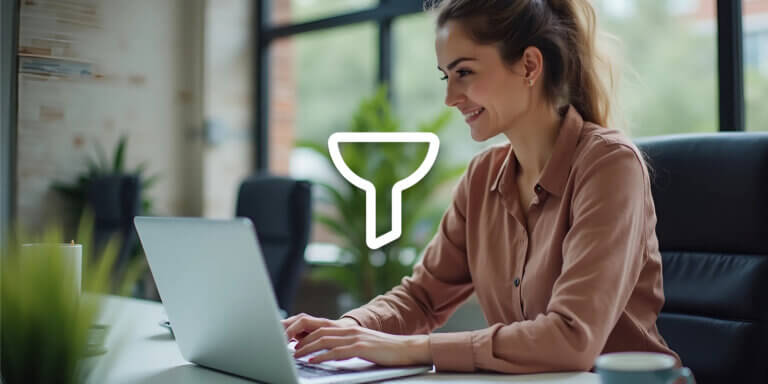Table of Contents
A SaaS sales funnel is more than just a pathway to conversion, it’s a strategic system for guiding prospects from first touch to loyal customer. This blog post breaks down how to build, measure, and optimize each stage of the funnel using proven frameworks, key metrics, and real-world tools. Whether you’re refining an existing funnel or starting from scratch, you’ll find practical guidance to drive sustainable growth.
This blog post covers:
What is a SaaS sales funnel?
A SaaS sales funnel is a step-by-step path that guides potential customers from first hearing about your software to becoming loyal users and advocates. It’s called a “funnel” because at the top, you have lots of people who might be interested. But as they move through each stage, the number narrows down to the few who actually sign up and buy.
The purpose of the sales funnel is to make the customer journey smoother and more effective. It helps you spot where leads are dropping off, where they’re getting stuck, and what nudges they need to keep moving forward. This way, you can fix stuff that doesn’t work and double down on what does.
Let’s explore three different models and the SaaS sales funnel stages as described in each one: AIDA, AARRR, and TOFU-MOFU-BOFU.
AIDA Model
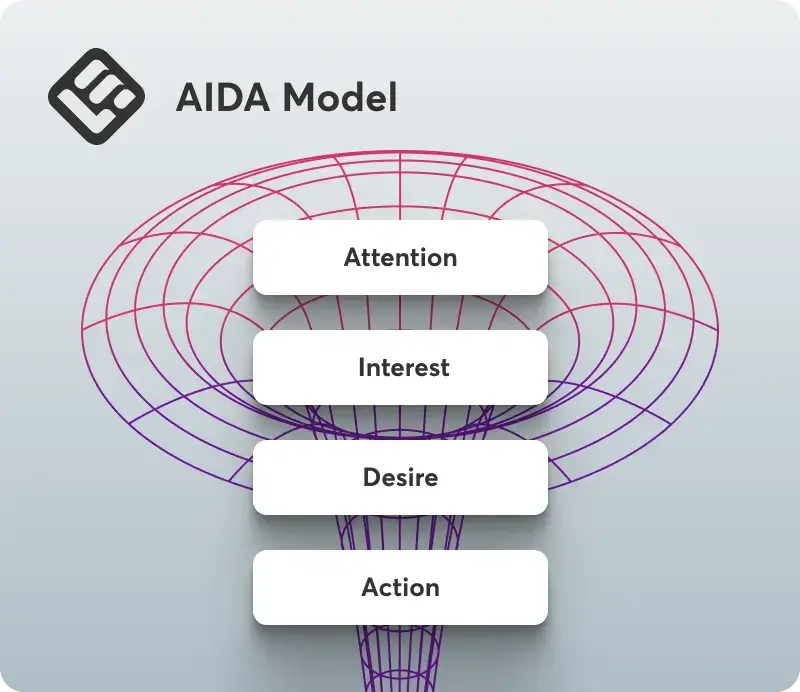
AIDA stands for Attention, Interest, Desire, Action. It’s a classic model that marketing and sales teams use to outline the stages prospective customers go through before making a purchase.
This model is more linear and psychology-based, often used for marketing campaigns. While not SaaS-specific, it’s still helpful for understanding how to move leads from awareness to action.
Stage 1: Attention
You grab the attention of potential users who were previously unaware of your product or their problem.
Tactics: Social media posts, eye-catching ad creatives, SEO blog posts, influencer partnerships, and topical content.
Key metrics: Impressions, reach, click-through rate (CTR), social shares, website traffic.
Stage 2: Interest
Now that you’ve got their attention, you need to spark curiosity and get them to care. They start exploring, reading, and following you.
Tactics: Blog content with deeper insights, educational YouTube videos or tutorials, free tools or lead magnets, email newsletters
Key metrics: Time on site, bounce rate, email sign-ups, content downloads, returning visitors
Stage 3: Desire
You build an emotional connection and make prospective customers want your product. They start imagining how it fits into their life or business.
Tactics: Testimonials or user-generated content, case studies, feature comparisons, personalization (email, website, retargeting), free trials
Key metrics: Trial signups, demo requests, pricing page visits, scroll depth on product pages
Stage 4: Action
This is where high quality leads take the leap—make a purchase, sign up, or subscribe. The goal at this stage of the sales funnel is to reduce friction and make the conversion feel natural.
Tactics: Clear CTAs, frictionless checkout pages, special offers or urgency, sales calls
Key metrics: Conversion rate, sales closed, revenue, drop-off rate during sign-up, abandoned cart/form rate
AARRR Model
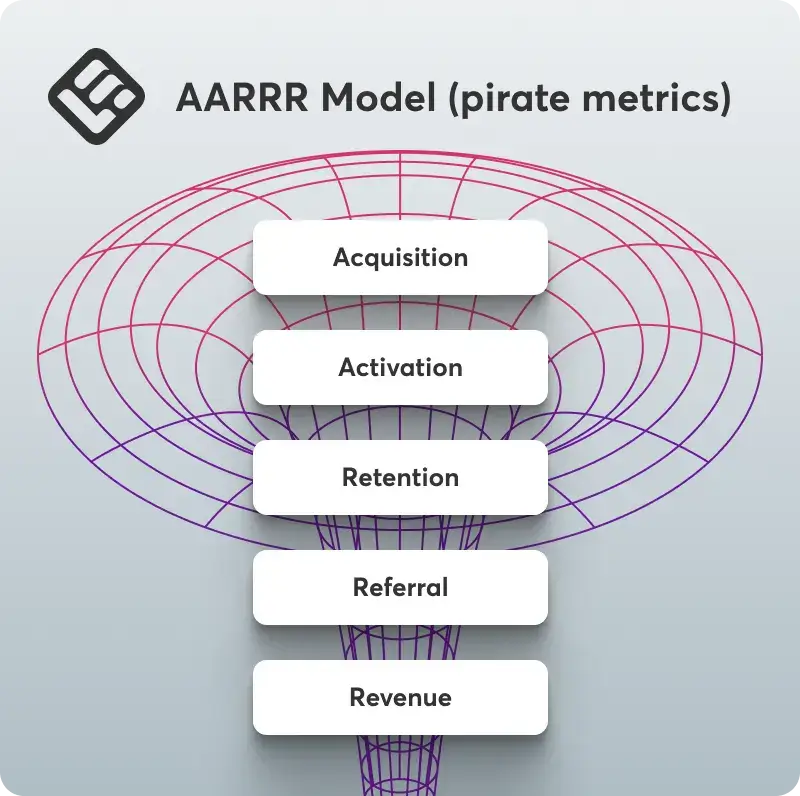
AARRR stands for Acquisition, Activation, Retention, Referral, Revenue. It’s also known as the “pirate metrics” framework (because of how it sounds). This model is popular in SaaS and startups for tracking user behavior and optimizing the customer journey:
Stage 1: Acquisition
Acquisition refers to how users find you. This is the marketing and awareness phase where they discover your product for the first time.
Tactics: SEO, Google/Facebook ads, influencer marketing, content marketing, affiliate programs
Key metrics: Website traffic, signups, source attribution, cost per lead (CPL), marketing-qualified leads (MQLs)
Stage 2: Activation
The moment a user has their so-called “aha” moment where they see value in your product.
Tactics: Onboarding emails, in-app product tours, quick-start guides, welcome videos, live onboarding sessions
Key metrics: Time to first value (TTFV), onboarding completion rate, feature adoption, product usage in the first session/week, activation rate
Stage 3: Retention
Customer retention means that users keep coming back. They’re actively using the product and seeing value consistently.
Tactics: Usage-based email nudges, in-app feature highlights, community forums, webinars, loyalty programs
Key metrics: Churn rate, daily/weekly/monthly active users (DAU/WAU/MAU), retention rate, session frequency
Stage 4: Referral
Happy users tell others about your product via word of mouth or structured referral programs.
Tactics: Referral or affiliate programs, in-app “share with a friend” prompts, review requests, rewards for referrals
Key metrics: Referral rate, viral coefficient (how many new users each user brings), number of shares, social mentions, NPS (Net Promoter Score)
Stage 5: Revenue
Revenue refers to how much money you make from users, whether it’s one-off payments, subscriptions, or upgrades.
Tactics: Tiered pricing models, upsell and cross-sell flows, annual plan discounts, free-to-paid conversion strategies, customer success team
Key metrics: ARR / MRR (Annual/Monthly Recurring Revenue), Customer Lifetime Value (CLTV), Average Revenue Per User (ARPU), conversion rate to paid
TOFU–MOFU–BOFU
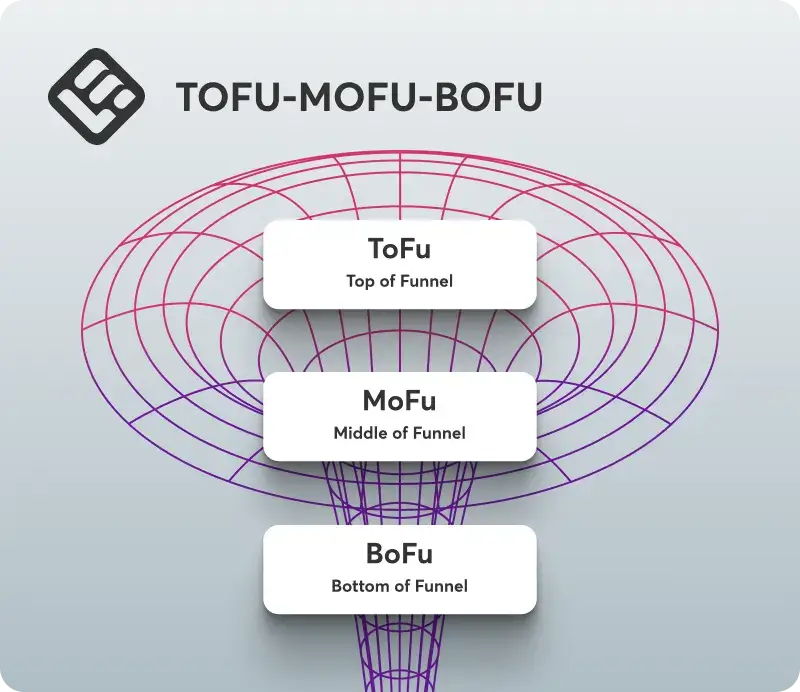
This model focuses on content marketing. It maps the SaaS marketing funnel and helps decide what materials or messages to use at each stage to better engage potential customers and reduce the sales cycle length. It stands for:
TOFU – Top of Funnel: Where people first discover you. Think blog posts, ads, and social media. Any content that grabs attention, basically.
MOFU – Middle of Funnel: Where leads are considering your product. This includes case studies, webinars, testimonials, and free trials.
BOFU – Bottom of Funnel: Where leads are ready to decide. Think pricing pages, demos, onboarding calls, and any resources that help close the sale.
Stage 1: Awareness (TOFU)
The awareness stage is the first touchpoint. It’s when potential customers become aware that your product or solution exists. Your job here is to educate or inspire without pushing for a sale.
Tactics: Blog posts, social media marketing, YouTube tutorials or explainer videos, infographics, free downloadable resources (checklists, templates), paid ads
Key metrics: Website traffic, social reach & engagement, click-through rates (CTR) on ads or content, new visitors
Stage 2: Interest / Consideration (MOFU)
Here, the lead knows they have a problem and is actively looking for solutions. They’re considering different products, including yours. Your goal is to build trust and show them why your SaaS stands out, with a solid value proposition.
Tactics: Case studies, webinars, comparison guides, email nurture sequences, whitepapers or reports, retargeting ads
Key metrics: Free trial or demo signups, time spent on pages (e.g. pricing, features), email open and click rates, webinar attendance, content downloads, leads qualified (MQLs)
Stage 3: Desire/Evaluation (Lower MOFU)
At this point, leads are seriously evaluating your product. They want proof, reassurance, and maybe a final nudge. This is where sales and marketing teams can work closely to convert consideration into action.
Tactics: Product demos (live or recorded), free trials, success stories and testimonials, interactive tools (ROI calculators, quizzes), personalized emails or 1:1 outreach, limited-time offers or discounts for urgency
Key metrics: Trial-to-paid conversion rate, sales call bookings, product engagement during trial, pipeline velocity (how fast leads move forward)
Stage 4: Decision/Conversion (BOFU)
This is one of the most critical stages in the SaaS sales funnel. This is where potential customers are ready to make a decision and turn into new customers. They’ve done the research, explored your product, and are considering committing. Your goal here is to reduce friction and make conversion feel like the natural next step.
Tactics: Transparent pricing pages, live chat, personalized demos or consultations, limited-time offers, free upgrades, or discounts, streamlined sign-up and checkout process
Key metrics: Paid conversions (from trial or demo), cost per acquisition (CPA), abandoned cart/form rate, customer acquisition rate
Stage 5: Retention and advocacy (post-purchase)
Much like the customer journey, the SaaS sales funnel doesn’t stop at the sale. This stage is about keeping new customers happy, helping them succeed, and turning them into loyal customers who renew, upgrade, or refer others. In SaaS, satisfied customers and customer retention are as important and challenging—if not more—than acquisition.
Tactics: Onboarding flows and welcome emails, in-app tooltips and product tours, regular check-ins, self-service resources, referral programs and affiliate incentives
Key metrics: Churn rate, customer lifetime value (CLTV), NPS, expansion revenue, referral traffic, new signups from existing customers, product usage and engagement over time
How do AIDA, AARRR, and TOFU–MOFU–BOFU fit in a marketing funnel?
All three are just different lenses for looking at the same thing, the journey from stranger to customer (and beyond):
AIDA = mindset/emotional journey, perfect for designing a campaign
AARRR = growth metrics and behavior tracking to measure PLG
TOFU–MOFU–BOFU = content and messaging strategy for content planning
In practice, many sales and marketing teams mix and match. For example, using AIDA to guide ad copy, TOFU–MOFU–BOFU to structure blog content, and AARRR to monitor growth metrics.
So, it’s not about choosing only one, but choosing the right combination to guide potential customers through your SaaS sales funnel.
9 key SaaS sales funnel metrics
To understand whether you have built a successful sales funnel and where potential customers are falling through the cracks you need both the right metrics and the right tools. Let’s start with the essential numbers all SaaS companies should be tracking at every stage of their sales funnel:
5 CRM and analytics platforms
CRM and analytics platforms offer a wealth of valuable data that will help you analyze and improve the customer journey. Here are 5 top picks:
Zendesk Sell
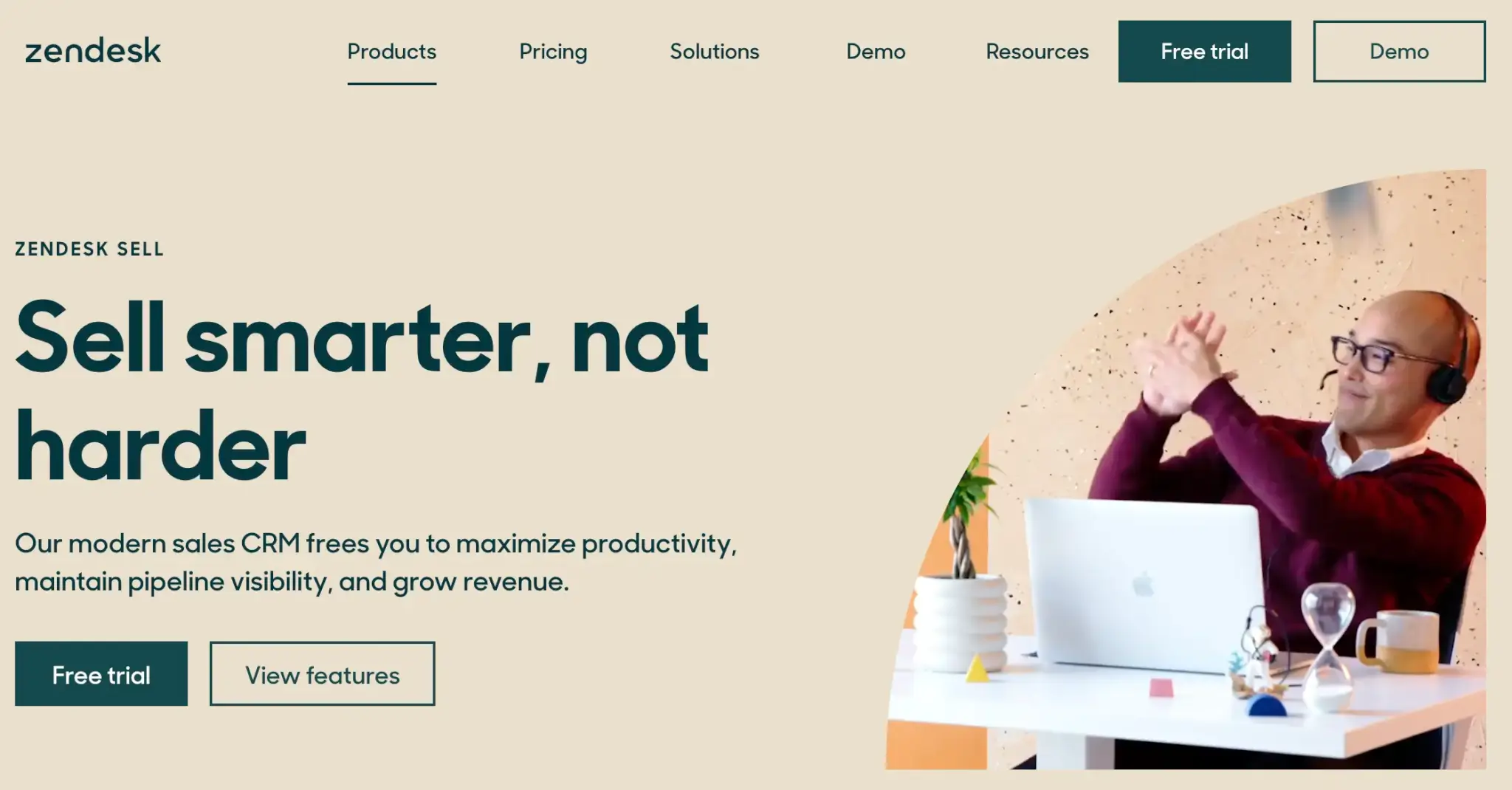
A modern, easy-to-use CRM that helps sales teams manage their pipeline, track leads, and close deals faster. Designed for growing SaaS companies, Zendesk Sell focuses on simplicity and productivity without skimping on powerful features.
Key Features:
Starting price: $19/user/mo (Team plan)
Hotjar
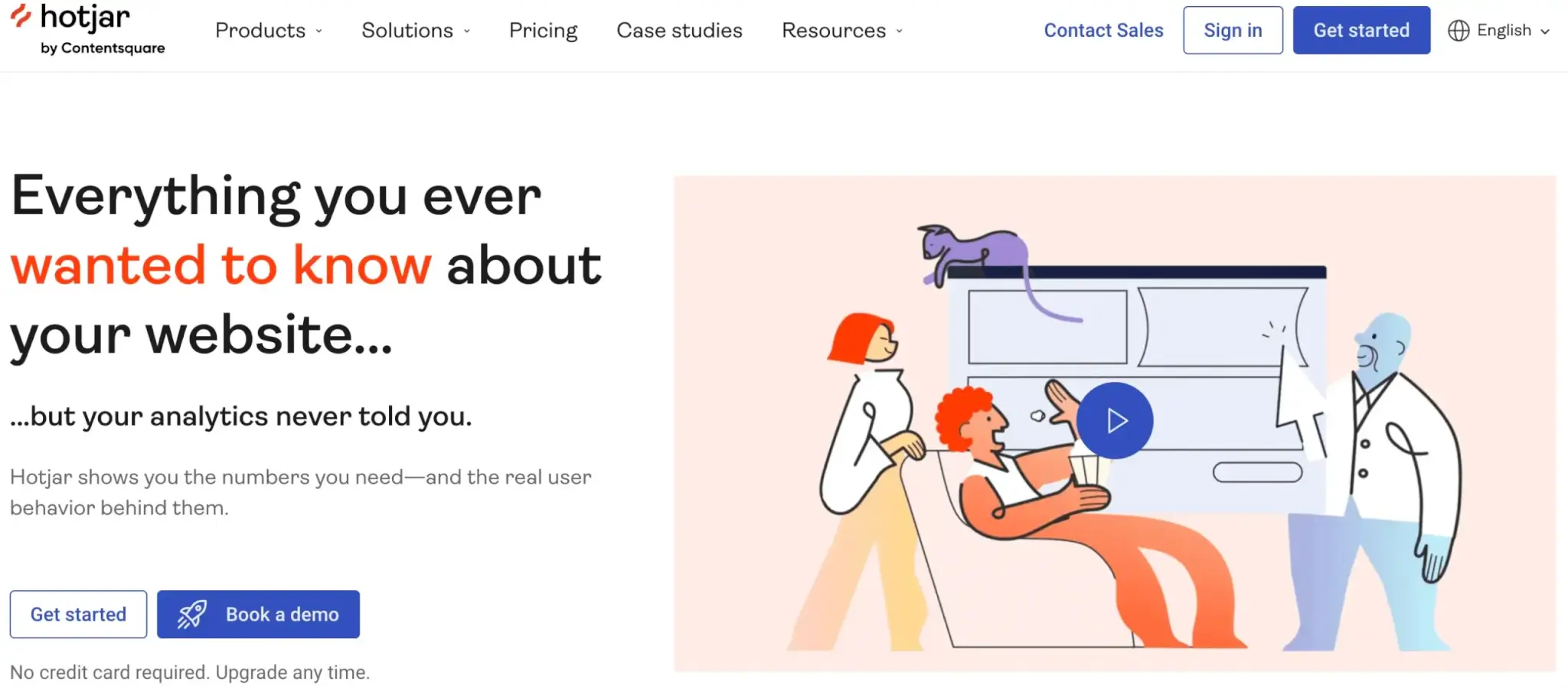
A behavior analytics platform, Hotjar gives you a behind-the-scenes look at how users interact with your site. It’s perfect for spotting drop-off points, improving UX, and validating design decisions.
Key Features:
Starting price: $39/mo (Plus plan)
ClickFunnels
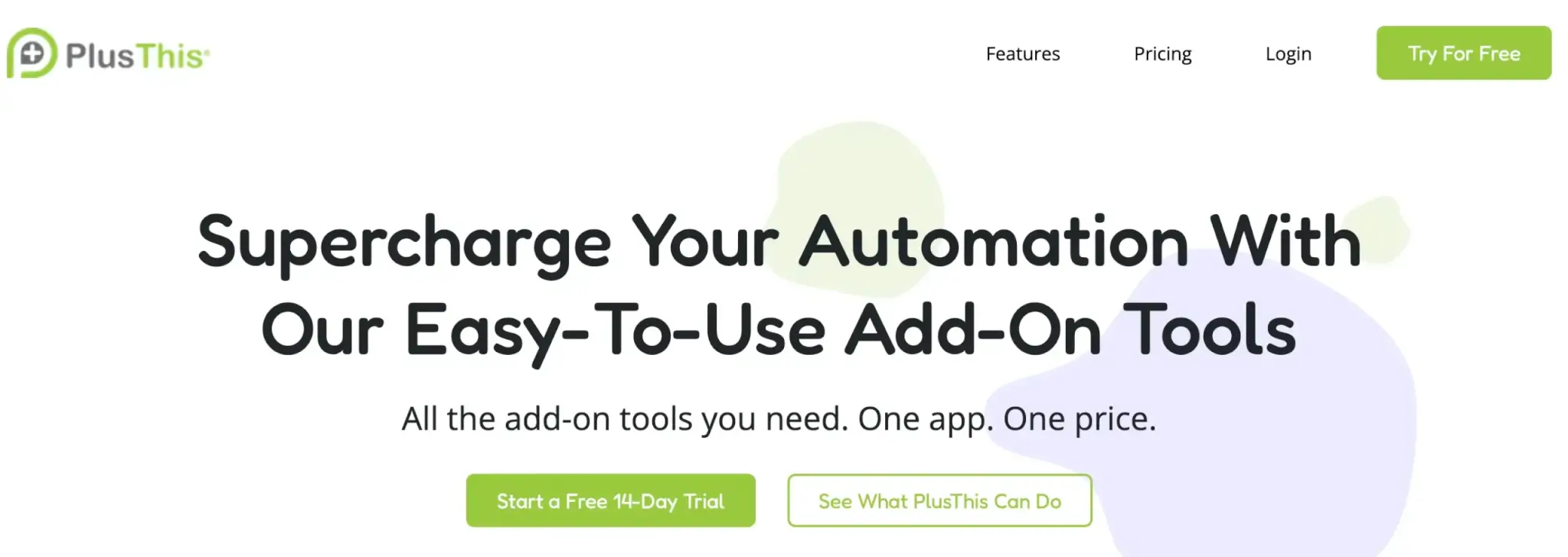
A full-featured funnel builder, ClickFunnels lets you design, launch, and optimize high-converting sales funnels without a single line of code. Great for marketing teams focused on lead generation, webinar funnels, and product launches.
Key Features:
Starting price: $147/mo (Basic plan)
PlusThis

A powerful add-on toolset built to enhance your existing CRM or marketing automation platform. PlusThis specializes in lead segmentation, personalization, and engagement—great for mid-funnel automation.
Key Features:
Starting price: $49/mo
Mixpanel
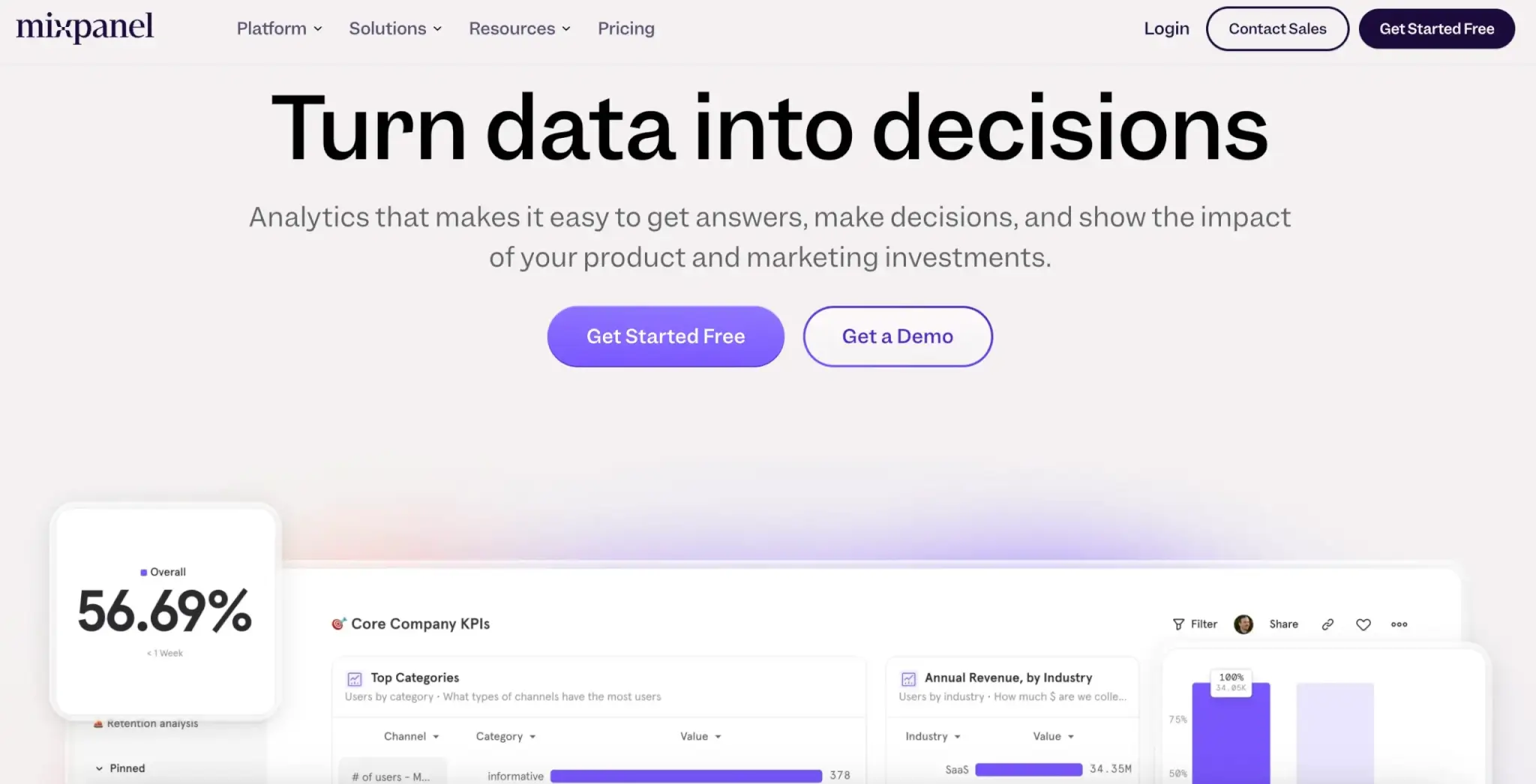
An advanced product and funnel analytics platform built for SaaS. Mixpanel helps you deeply understand user behavior, measure feature adoption, and analyze what drives retention or churn.
Key Features:
Starting price: Free plan available. Paid plans start at $20/month.
Common funnel optimization techniques
Even the most well-built funnels will have points of friction—small issues that can create big drop-offs. Funnel optimization is about finding and fixing those problems so more leads make it all the way through to becoming happy, paying customers. Here are three key techniques used by top SaaS teams:
Fix sales funnel leaks
Funnel “leaks” are the places where leads drop off without completing the next step—like abandoning a trial signup or leaving a pricing page. These can often be traced back to user experience issues that aren’t obvious at first glance.
How to fix it:
💡Pro tip: Pair recordings with heatmaps to understand both where most people click and how they behave
Aim for personalization
Not all visitors are alike—and treating them the same can lead to poor engagement. Personalization helps tailor the user experience based on different criteria.
How to personalize:
💡Tools that help: PlusThis, Clearbit, and personalization engines in your CRM or CMS
Remove product-led bottlenecks
In SaaS, especially in product-led growth models, the trial experience is key. If users don’t quickly find value during their trial, they’ll leave and probably not come back.
How to improve:
💡Bonus tip: send behavior-based emails during the trial to re-engage inactive users or celebrate milestones
How to build a SaaS sales funnel: Templates & examples
Sometimes the best way to understand a sales funnel is to see how other companies structure theirs. Here is how to create a SaaS sales funnel using real-world and strategic examples of funnel approaches from successful SaaS companies and tools:
Vimcar’s 3-step funnel
Vimcar, a fleet management SaaS, uses a very clean and focused 3-step marketing funnel:
Step 1: Landing page with intent. Visitors land on a high-converting page tailored to their industry or use case
Step 2: Quote request form. Instead of pushing for a trial, Vimcar asks for a quote request, which qualifies the lead
Step 3: Sales team follow-up. A personalized offer or demo is provided quickly after form submission
This lean marketing funnel works well for B2B SaaS with high-touch sales and a defined ICP.
Hotjar’s full-funnel clusters
Hotjar uses a content-driven funnel strategy where each stage of the buyer journey is supported by clusters of targeted content:
This “content cluster” model is ideal for SaaS businesses using SEO and inbound marketing to drive traffic and nurture leads across the marketing funnel.
Eleken & HubSpot for customer journey maps
Eleken (a SaaS UI/UX agency) and HubSpot both advocate for using customer journey mapping as a way to align your funnel with the actual user experience.
Useful when designing or improving complex, multi-stage funnels where handoffs between marketing, product, and support teams are involved.
Ready to build your sales funnel?
A well-structured SaaS sales funnel isn’t just about acquiring leads—it’s about creating a data-driven journey that turns prospects into loyal, paying customers. By applying the frameworks we shared today, tracking key metrics, and using the right tools, you can build a funnel that drives real growth and retention.
Want to reduce churn and increase conversions? LearnWorlds helps SaaS businesses boost funnel performance through customer education. Create engaging onboarding courses and webinars, on-demand training material, and certification programs that turn trial users into customers and brand advocates.
See how LearnWorlds can help your business grow with a 30-day free trial.

Androniki Koumadoraki
Androniki is a Content Writer at LearnWorlds sharing Instructional Design and marketing tips. With solid experience in B2B writing and technical translation, she is passionate about learning and spreading knowledge. She is also an aspiring yogi, a book nerd, and a talented transponster.

